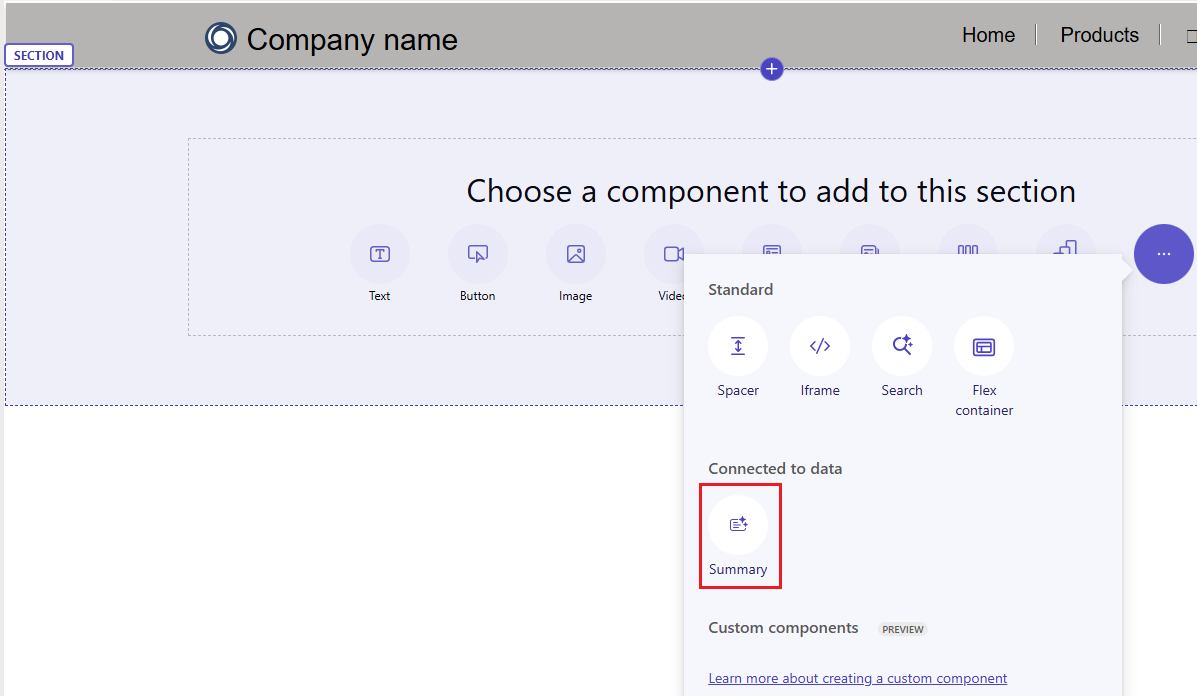Note
Access to this page requires authorization. You can try signing in or changing directories.
Access to this page requires authorization. You can try changing directories.
The summarization component gives a summary of content using the Power Pages Web API. It summarizes data from one or more Dataverse tables through the Web API.
Note
The summary component is available only on websites that enable Data summarization through site settings.
How to add a summary component
To add the summary component to a page:
Open design studio to edit your page's content and components.
Select the page you want to edit.
Select the section where you want to add the summary.
Hover over any editable canvas area, then select the Summary component from the component panel.

Summary settings
Update the following settings to format and display the summary:
| Title | Title of the summary component. |
|---|---|
| Summarization API | The pages API that retrieves data from Dataverse tables. |
| Additional instruction | Guides the summary's behavior, tone, and focus. Explains how the summary appears, including preferences for tone, detail level, and any topics to focus on or avoid. |
| Keep summary expanded | Sets whether the summary component is expanded or collapsed when the page loads. |
Summarization API
Summarization API is built on top of the Power Pages Web API, which lets you retrieve data from Dataverse tables.
Examples of summarization queries
To summarize title and comments columns of all feedback records:
feedback?$select=title,commentsTo summarize selected idea name, description, and all related active comments with column name description:
adx_ideas({{id}})?$select=name,description&$expand=adx_ideacomment($select=adx_comments,description;filter=statecode eq 0)In this example, replace the placeholder
<id>with your own value.